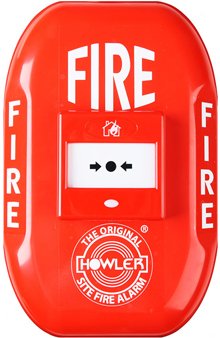 All homes should be equipped with a fire alarm system; 80% of deaths due to house fires occur in homes without functioning fire alarms. By maintaining your fire alarms correctly and installing a sufficient amount in your home, you will be able to have advance warning the moment a fire starts in your house.
All homes should be equipped with a fire alarm system; 80% of deaths due to house fires occur in homes without functioning fire alarms. By maintaining your fire alarms correctly and installing a sufficient amount in your home, you will be able to have advance warning the moment a fire starts in your house.
Without fire alarms, you may be sleeping at the time when a fire starts, and may not wake up until it is too late and you can no longer escape your home safely. A fire alarm combined with a fire extinguisher can provide you the early warning that you need to safely extinguish the fire before it spreads and becomes too large to combat.
Make sure you regularly check the batteries in your fire alarm and keep it activated at all times. Most fire alarms come with a low-battery chirp signaling when it’s time to change out the batteries with fresh ones. You should deal with this annoying chirping noise responsibly and change out the batteries rather than simply turning it off because it’s annoying and tell yourself you’ll change the batteries later. Without batteries, a battery powered fire alarm will be unable to protect your family from house fires.
Fire alarms work by detecting the presence of smoke in the air. Fire alarms that use ionization to detect smoke are generally a better choice than those that rely only on photoelectric sensors. Ionization sensors utilize a small amount of the radioactive isotope americium in order to detect smoke. Smoke disrupts the flow of the ions between two plates in the fire alarm, which causes the fire alarm to go off. Photoelectric fire alarms use a small beam of light between two plates in the fire alarm instead of a flow of ions, and when the beam of light is disrupted by smoke the alarm will go off.
The amount of smoke needed to set off a fire alarm with an ionization sensor is less than what would be required from a fire alarm using a photoelectric sensor, meaning that they will detect a possible fire sooner. Fire alarms that use ionization sensors are generally less expensive as well. Don’t be concerned about the minute amount of radiation present in ionization sensors; a few inches of air will stop all the radiation emitted from the sensor. It’s only potentially dangerous if you disassemble the fire alarm and come in contact with the americium itself.
Consider getting a model with a carbon monoxide detector; it can save your life. Carbon monoxide is a colorless and odorless gas that can cause respiratory distress in lower quantities and potentially unconsciousness in higher quantities. Since there’s no way for you to detect the presence of carbon monoxide gas with your eyes or nose, it can potentially build up in your home until it eventually renders you unconscious. Once you are unconscious it will be too late to stop the build-up of carbon monoxide gas in your home, and you may potentially die if nobody discovers you in time. Therefore, it’s important to have a fire alarm that detects carbon monoxide so you can detect when it is building up inside your home.
About the author: This article was written by Kelly Marshall for fireprotectiononline.co.uk, the leading source for fire hose supplies.